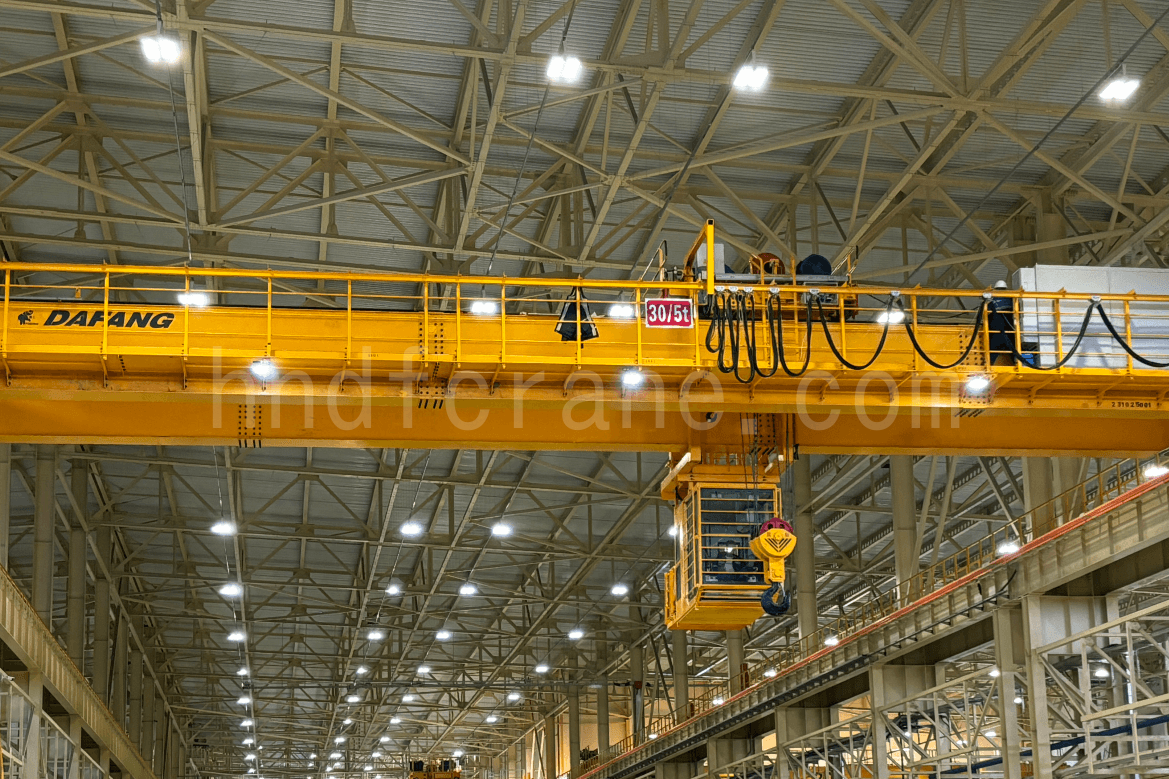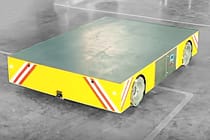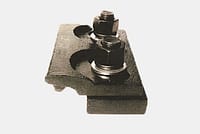อุบัติเหตุจากเครนเหนือศีรษะ: 6 สาเหตุและวิธีแก้ไขของอุปกรณ์ยกที่ล้มเหลว
สารบัญ
เครนเหนือศีรษะมักใช้ในอุตสาหกรรม และความปลอดภัยในการปฏิบัติงานถือเป็นสิ่งสำคัญที่สุด เพื่อลดอัตราการเกิดอุบัติเหตุจากเครนเหนือศีรษะ บทความนี้วิเคราะห์อุบัติเหตุที่เกี่ยวข้องกับอุปกรณ์ยก 6 ประเภท ได้แก่ ตะขอล้มและหล่น ตะขอชนและหล่น ลวดสลิงหลุดออก คานเครนหลุดออก การใช้อุปกรณ์ยกอย่างไม่ถูกต้อง และอันตรายด้านความปลอดภัยระหว่างการเปลี่ยนลวดสลิง สำหรับอุบัติเหตุจากเครนเหนือศีรษะแต่ละประเภท ได้มีการเสนอมาตรการป้องกันโดยมุ่งหวังที่จะเพิ่มความปลอดภัยของอุปกรณ์ยกและรับรองการปฏิบัติงานที่ปลอดภัย

1. ตะขอล้มและหลุด
อุบัติเหตุเครนเหนือศีรษะที่พบบ่อยซึ่งเกี่ยวตะขอล้มและหล่น ได้แก่ ตะขอหลักของเครนไปกระแทกกับขีดจำกัดบน ลวดสลิงขาด และตะขอตกลงมา การทำงานไม่ถูกต้องของผู้ควบคุม สวิตช์จำกัดความสูงขัดข้อง และไม่ตรวจสอบทันเวลา ในระหว่างการยก ผู้ควบคุมไม่ได้รีเซ็ตคันควบคุมทันที หากการทำงานหยุดชะงักหรือเกิดไฟฟ้าดับ และอุปกรณ์เปิดเครื่องอีกครั้ง ตะขอเสริมอาจยกขึ้นโดยตรง ส่งผลให้เกิดอุบัติเหตุล้มได้
การวิเคราะห์สาเหตุอุบัติเหตุ
- อุปกรณ์ทำงานผิดปกติ: สวิตช์จำกัดความสูงเป็นมาตรการด้านความปลอดภัยที่สำคัญอย่างหนึ่ง เจ้าหน้าที่บำรุงรักษาไม่สามารถตรวจพบว่าสวิตช์จำกัดความสูงทำงานผิดปกติ ทำให้เครนทำงานโดยมีความเสี่ยงต่อความปลอดภัย
- การทำงานที่ไม่เหมาะสมของผู้ปฏิบัติงาน: ในระหว่างการยก หลังจากตะขอหลักไปถึงตำแหน่งที่ต้องการ ผู้ปฏิบัติงานไม่สามารถรีเซ็ตคันควบคุมได้ทันเวลา หากการทำงานหยุดชะงักหรือไฟฟ้าดับ และอุปกรณ์เปิดขึ้นอีกครั้ง ตะขอ ยังคงเคลื่อนที่ต่อไปจนเกิดอุบัติเหตุตะขอล้ม
- ระบบการจัดการที่ไม่เพียงพอ: ฝ่ายบริหารและบำรุงรักษาล้มเหลวในการจัดทำระบบตรวจสอบความปลอดภัยของอุปกรณ์อย่างสม่ำเสมอ ส่งผลให้ไม่สามารถตรวจพบความผิดปกติของสวิตช์จำกัดความสูงได้ทันเวลา โดยเฉพาะในกรณีของชิ้นส่วนที่เสี่ยง เช่น พื้นที่เกินขีดจำกัดของสวิตช์ ซึ่งไม่ได้รับการตรวจสอบหรือแก้ไข
มาตรการป้องกันตะขอล้มและหลุด
- เสริมความแข็งแกร่งในการตรวจสอบและบำรุงรักษาอุปกรณ์: เนื่องจากเครนเหนือศีรษะเป็นอุปกรณ์ประเภทพิเศษ จึงจำเป็นต้องตรวจสอบคุณลักษณะด้านความปลอดภัยที่สำคัญและอุปกรณ์ป้องกันบ่อยครั้งขึ้น อุปกรณ์ด้านความปลอดภัยที่ทำงานผิดปกติควรได้รับการซ่อมแซมหรือเปลี่ยนใหม่ทันทีเพื่อลดความเสี่ยงของอุบัติเหตุจากการที่ขอเกี่ยวล้ม
- เพิ่มประสิทธิภาพการทำงานของวงจรควบคุมไฟฟ้า: ในกรณีนี้ การรีเซ็ตคันควบคุมไม่ทันเวลาเป็นสาเหตุสำคัญของอุบัติเหตุ ดังนั้น ควรพยายามปรับปรุงคุณลักษณะด้านความปลอดภัยของระบบควบคุมไฟฟ้า สามารถเพิ่มฟังก์ชันการป้องกันตำแหน่งศูนย์ให้กับแผงควบคุมได้ เพื่อให้อุปกรณ์ทำงานได้เฉพาะเมื่อคันควบคุมอยู่ในตำแหน่งศูนย์เมื่อไฟฟ้ากลับมาทำงานอีกครั้งหลังจากหยุดการทำงานหรือไฟดับ
- เพิ่มขอบเขตความปลอดภัย: เพื่อลดโอกาสเกิดอุบัติเหตุ ควรเพิ่มขอบเขตความปลอดภัยสำหรับอุปกรณ์ความปลอดภัยต่างๆ ตัวอย่างเช่น หากความน่าเชื่อถือของสวิตช์จำกัดตัวเดียวคือ R=0.9 การใช้สวิตช์จำกัดสองตัวขนานกันสามารถเพิ่มความน่าเชื่อถือโดยรวมเป็น R ได้=0.99 ลดโอกาสเกิดอุบัติเหตุได้อย่างมาก ความน่าเชื่อถือรวม R คำนวณได้จาก R* = 1 – (1 – R)² = 0.99
- ปรับปรุงการฝึกอบรมผู้ปฏิบัติงาน: เนื่องจากเครนเหนือศีรษะจัดอยู่ในประเภทอุปกรณ์พิเศษ ผู้ปฏิบัติงานจึงควรได้รับการฝึกอบรมและการรับรองอย่างเหมาะสมก่อนที่จะได้รับอนุญาตให้ปฏิบัติงานอุปกรณ์ดังกล่าว ห้ามบุคลากรที่ไม่มีคุณสมบัติควบคุมเครน ควรจัดการฝึกอบรมเป็นประจำเพื่อให้แน่ใจว่าผู้ปฏิบัติงานได้รับข้อมูลอัปเดตเกี่ยวกับแนวทางปฏิบัติด้านความปลอดภัยและทักษะการปฏิบัติงานอย่างต่อเนื่อง
2. อุบัติเหตุเครนเหนือศีรษะจากการตกของตะขอ
อุบัติเหตุจากเครนเหนือศีรษะที่พบบ่อยซึ่งเกี่ยวตะขอหล่น ได้แก่ การไม่รักษาระยะห่างที่ปลอดภัยระหว่างตะขอหลักและตะขอเสริมระหว่างการทำงานของเครน ผู้ปฏิบัติงานที่ไม่มีคุณสมบัติดำเนินการยกของโดยไม่ได้รับใบรับรองที่เหมาะสม การปฏิบัติงานยกของในสภาวะที่ไม่ปลอดภัย และผู้จัดการด้านความปลอดภัยไม่เข้ามาแทรกแซงในเวลาที่เหมาะสม อุบัติเหตุเหล่านี้อาจส่งผลให้ตะขอ 2 ตัวชนกัน ทำให้ลวดสลิงหลุดออกจากรอกและตะขอหล่นลงมา
การวิเคราะห์สาเหตุการเกิดอุบัติเหตุจากการพลัดตกจากขอ
- ผู้ปฏิบัติงานไม่ปฏิบัติตามขั้นตอนการปฏิบัติงาน: ผู้ปฏิบัติงานยกของโดยไม่เตรียมแผนการยกของโดยไม่ปฏิบัติตามขั้นตอนการปฏิบัติงานอุปกรณ์ จึงทำให้เกิดอุบัติเหตุขึ้น
- ปัญหาการออกแบบอุปกรณ์เพื่อความปลอดภัย: ในระหว่างการดำเนินการยกปกติ ตัวป้องกันตะขอถูกออกแบบมาเพื่อป้องกันไม่ให้ตะขอหล่นลงมาหากลวดสลิงหลุดออกจากรอก อย่างไรก็ตาม หากช่องว่างของตัวป้องกันกว้างเกินไปหรือวางตำแหน่งไม่ถูกต้อง ก็จะไม่สามารถป้องกันไม่ให้ตะขอหล่นลงมาได้
มาตรการป้องกันตะขอหลุด
- เสริมสร้างความตระหนักด้านความปลอดภัยของผู้ปฏิบัติงาน: เนื่องจากเครนเหนือศีรษะจัดอยู่ในประเภทอุปกรณ์พิเศษ การไม่ปฏิบัติตามขั้นตอนการปฏิบัติงานอาจก่อให้เกิดอันตรายด้านความปลอดภัยได้อย่างมาก ดังนั้น จึงมีความจำเป็นอย่างยิ่งที่จะต้องเสริมสร้างความตระหนักด้านความปลอดภัยของผู้ปฏิบัติงานและให้แน่ใจว่าพวกเขาเข้าใจว่าความปลอดภัยเป็นสิ่งสำคัญที่สุด
- ปรับปรุงการศึกษาและการฝึกอบรมด้านความปลอดภัยสำหรับบุคลากรฝ่ายจัดการในสถานที่: ผู้จัดการด้านความปลอดภัยในสถานที่มีบทบาทสำคัญในการปฏิบัติการยกของ พวกเขาต้องเข้าไปแทรกแซงทันทีเมื่อผู้ปฏิบัติงานไม่ปฏิบัติตามมาตรการด้านความปลอดภัย การเสริมสร้างการศึกษาและการฝึกอบรมด้านความปลอดภัยสำหรับบุคลากรฝ่ายจัดการในสถานที่จะช่วยให้เกิดความรับผิดชอบและส่งเสริมวัฒนธรรมแห่งการเฝ้าระวัง ซึ่งจะช่วยให้พวกเขาเข้าใจว่าการให้ความสำคัญกับความปลอดภัยอย่างสม่ำเสมอเป็นสิ่งสำคัญในการรับรองการปฏิบัติการยกของที่ปลอดภัย
- การบังคับใช้ข้อกำหนดการรับรองอย่างเคร่งครัด: เสริมสร้างการจัดการปฏิบัติการยกของโดยปฏิบัติตามระบบข้อกำหนดการรับรองอย่างเคร่งครัด ควรอนุญาตให้เฉพาะผู้ปฏิบัติงานที่ได้รับการรับรองที่จำเป็นเท่านั้นที่ดำเนินการยกของ ส่วนผู้ที่ไม่มีการรับรองที่เหมาะสมควรถูกห้ามไม่ให้ใช้งานอุปกรณ์
3. อุบัติเหตุลวดสลิงหลุดออก
อุบัติเหตุที่เกิดขึ้นกับเครนเหนือศีรษะทั่วไปซึ่งลวดสลิงหลุดออก ได้แก่ ความเสียหายที่ด้านหนึ่งของคลิปป้องกันบนชุดรอกที่เคลื่อนที่ได้ของตะขอ ซึ่งทำให้ลวดสลิงหลุดออกในระหว่างการยก ส่งผลให้ตะขอหล่นลงมาและได้รับบาดเจ็บ
การวิเคราะห์สาเหตุของอุบัติเหตุลวดสลิงหลุดออก
ชุดรอกเป็นส่วนประกอบหลักในการยกเครนเหนือศีรษะ โดยมีความเกี่ยวข้องอย่างใกล้ชิดกับความสามารถในการยกของชุดรอกและน้ำหนักสูงสุดที่ลวดสลิงสามารถรับได้ หากด้านใดด้านหนึ่งของคลิปป้องกันบนชุดรอกที่เคลื่อนย้ายได้ของตะขอได้รับความเสียหายและไม่ได้รับการเปลี่ยนใหม่ระหว่างการตรวจสอบตามปกติ ลวดสลิงอาจหลุดออกในระหว่างกระบวนการยก ส่วนที่หย่อนของลวดสลิงจะถูกดึงขึ้นอย่างรวดเร็ว ซึ่งอาจนำไปสู่การเกิดอุบัติเหตุได้
มาตรการป้องกันลวดสลิงหลุดออก
แม้ว่าความน่าจะเป็นโดยตรงของการบาดเจ็บส่วนบุคคลจากลวดสลิงหลุดจะค่อนข้างต่ำ แต่กฎ 330 ของไฮน์ริชแสดงให้เห็นว่าอุบัติเหตุร้ายแรงมักเกิดขึ้นจากเหตุการณ์ซ้ำๆ เล็กๆ น้อยๆ ที่สะสมกันมาเป็นเวลานาน ดังนั้น ในการยกของทุกวัน หากเกิดปัญหาลวดสลิงหลุด จำเป็นต้องซ่อมแซม แก้ไข หรือหยุดใช้งานโดยทันที การแก้ไขปัญหาเหล่านี้อย่างทันท่วงทีในการจัดการประจำวันสามารถขจัดอันตรายที่อาจเกิดขึ้นได้ในระยะเริ่มต้น และป้องกันความเสี่ยงต่ออุบัติเหตุร้ายแรงได้
4. อุบัติเหตุการหลุดของตะขอเครน
อุบัติเหตุที่มักเกิดขึ้นจากการที่ขอเกี่ยวเครนหลุดออก ได้แก่ ขอเกี่ยวหลักไม่มีอุปกรณ์ล็อกเพื่อความปลอดภัย ผู้ปฏิบัติงานไม่ปฏิบัติตามขั้นตอนการปฏิบัติงานที่ถูกต้องระหว่างการยกของ โดยที่สินค้าไม่ได้อยู่ในตำแหน่งที่ปลอดภัย และหัวหน้างานยกของในสถานที่ไม่มีใบรับรองที่จำเป็น ในระหว่างขั้นตอนการยกของ จะไม่มีการตรวจสอบขอเกี่ยวอย่างระมัดระวัง ทำให้สินค้าไม่มั่นคง ส่งผลให้คานเครนหลุดออกจากขอเกี่ยวและพลิกคว่ำ
การวิเคราะห์สาเหตุของอุบัติเหตุการปลดตะขอเครน
- เครนทำงานผิดพลาด: เครนเหนือศีรษะควรติดตั้งอุปกรณ์ความปลอดภัยที่ครอบคลุมเพื่อให้แน่ใจว่าบุคลากรและอุปกรณ์ต่างๆ จะปลอดภัยระหว่างการยก อย่างไรก็ตาม หากขอเกี่ยวหลักของเครนไม่มีอุปกรณ์ล็อกเพื่อความปลอดภัย และไม่มีกลไกการล็อกเพื่อป้องกันการปลดสลิงยกโดยไม่ได้ตั้งใจ สิ่งนี้จะก่อให้เกิดอันตรายด้านความปลอดภัยอย่างมาก
- ผู้ปฏิบัติงานไม่ปฏิบัติตามขั้นตอนการปฏิบัติงาน: ผู้ปฏิบัติงานไม่ปฏิบัติตามขั้นตอนการปฏิบัติงานด้านความปลอดภัยที่เหมาะสม โดยเฉพาะอย่างยิ่ง ไม่ได้วางโหลดในตำแหน่งที่ปลอดภัยก่อนหยุด ทำให้การวางไม่มั่นคงและส่งผลให้ตะขอเครนหลุดออก
- ความประมาทของหัวหน้างานในสถานที่: หัวหน้างานยกของในสถานที่ไม่ได้ตรวจสอบสถานะของตะขอสำหรับยกอย่างถูกต้อง การขาดความเอาใจใส่ส่งผลให้วางสิ่งของไม่ถูกต้องและไม่มั่นคงในระหว่างการยก
- หัวหน้างานประจำสถานที่ไม่มีคุณสมบัติ: หัวหน้างานยกของประจำสถานที่ดำเนินการยกของโดยไม่ได้รับใบรับรองความปลอดภัยที่จำเป็น ถือเป็นความเสี่ยงด้านความปลอดภัยอย่างยิ่ง เนื่องจากการดูแลที่ขาดคุณสมบัติอาจนำไปสู่ข้อผิดพลาดและอุบัติเหตุร้ายแรงได้
มาตรการป้องกันตะขอเครนหลุดออก
- เพิ่มการตรวจสอบและบำรุงรักษาอุปกรณ์: สภาพการทำงานที่ปลอดภัยของอุปกรณ์ถือเป็นรากฐานของการทำงานที่ปลอดภัย ควรจัดให้มีการตรวจสอบเป็นประจำเพื่อให้แน่ใจว่าอุปกรณ์ความปลอดภัยทั้งหมดทำงานได้อย่างถูกต้อง ป้องกันไม่ให้เครนทำงานผิดพลาด
- ปรับปรุงการฝึกอบรมและการรับรองผู้ปฏิบัติงาน: ผู้ปฏิบัติงานอุปกรณ์ควรได้รับการฝึกอบรมและการรับรองเพื่อให้แน่ใจว่าพวกเขาสามารถปรับการทำงานของเครนได้ตามสถานะของโหลดที่ยกขึ้น ซึ่งจะช่วยให้มั่นใจได้ว่าการยกจะดำเนินการอย่างปลอดภัย
- หัวหน้างานยกของในสถานที่ควรได้รับการรับรอง: หัวหน้างานยกของในสถานที่มีบทบาทสำคัญ และงานของพวกเขาเกี่ยวข้องกับความเสี่ยงด้านความปลอดภัยอย่างมาก พวกเขาควรได้รับการฝึกอบรมด้านความปลอดภัยและผ่านการทดสอบการรับรองก่อนที่จะได้รับอนุญาตให้ดูแลการดำเนินการยกของ ซึ่งจะทำให้มั่นใจได้ว่าพวกเขาได้รับการเตรียมความพร้อมอย่างเพียงพอในการจัดการความเสี่ยงที่เกี่ยวข้องกับงานยกของ
5. อุบัติเหตุจากการใช้งานอุปกรณ์ยกที่ไม่ถูกต้อง
อุบัติเหตุเครนเหนือศีรษะที่มักเกิดขึ้นจากการใช้งานอุปกรณ์ยกไม่ถูกต้อง ได้แก่ การยกวัตถุขนาดใหญ่ โดยเฉพาะแผ่นเหล็ก การวางตำแหน่งอุปกรณ์ยกไม่ถูกต้อง ไม่สามารถวางสิ่งของให้เท่ากันและมั่นคง ทำให้สิ่งของเอียงและหลุดออกจากอุปกรณ์ยก จนทำให้มีวัตถุหนักหล่นลงมา
การวิเคราะห์สาเหตุการใช้งานอุปกรณ์ยกของไม่ถูกต้อง
- ไม่สามารถยึดโหลดได้อย่างเหมาะสม: ผู้ปฏิบัติงานไม่สามารถตรวจสอบให้แน่ใจว่าได้ยึดโหลดอย่างแน่นหนาแล้วก่อนทำการยก ส่งผลให้โหลดเอียงและหลุดออกจากเครื่องมือยกในระหว่างกระบวนการ
- การขาดการฝึกอบรมด้านความปลอดภัยสำหรับบุคลากรของผู้ยกของ: ผู้ยกของขาดการฝึกอบรมทางเทคนิคด้านความปลอดภัยที่เหมาะสม และไม่คุ้นเคยกับมาตรการด้านความปลอดภัยที่จำเป็น ซึ่งจะเพิ่มความเสี่ยงของการจัดการอุปกรณ์ยกที่ไม่เหมาะสม
- ไม่ใช้เครื่องมือยกแบบพิเศษ: มีการใช้อุปกรณ์ยกหรือที่หนีบแบบทั่วไปหรือไม่เหมาะสมแทนที่จะใช้อุปกรณ์ยกแบบพิเศษ ส่งผลให้น้ำหนักเอียงในระหว่างกระบวนการยก
มาตรการป้องกันการใช้เครื่องยกของโดยไม่เหมาะสม
- ต้องแน่ใจว่าได้ยึดโหลดขนาดใหญ่ให้แน่นหนา: เมื่อยกโหลดขนาดใหญ่ โดยเฉพาะแผ่นเหล็ก สิ่งสำคัญคือต้องแน่ใจว่าโหลดได้รับการยึดอย่างแน่นหนาและมีความสมดุล โดยให้จุดศูนย์ถ่วงอยู่ในแนวที่ถูกต้อง เพื่อป้องกันไม่ให้เอียง
- กำหนดพื้นที่ยกที่ปลอดภัย: ควรมีการทำเครื่องหมายโซนความปลอดภัยที่ชัดเจนระหว่างดำเนินการยก และไม่มีบุคลากรคนใดควรเข้าไปในพื้นที่ยกอันตรายระหว่างกระบวนการยก
- เสริมสร้างการศึกษาและการดูแลด้านความปลอดภัยรายวัน: ควรดำเนินการทั้งการศึกษาด้านความปลอดภัยเป็นประจำและการดูแลในสถานที่เกี่ยวกับกระบวนการยก เพื่อให้แน่ใจว่าปฏิบัติตามโปรโตคอลด้านความปลอดภัย และสร้างสภาพแวดล้อมการทำงานที่ปลอดภัยสำหรับทุกคนที่เกี่ยวข้อง
6. อุบัติเหตุจากการเปลี่ยนลวดสลิง
อุบัติเหตุจากเครนเหนือศีรษะที่มักเกิดขึ้นระหว่างการเปลี่ยนลวดสลิง ได้แก่ คนงานขาดประสบการณ์ จัดพื้นที่ทำงานไม่ถูกต้อง เช่น มีหลุมลึกหรือมีเศษวัสดุอยู่บนพื้นดิน และไม่ใช้มาตรการป้องกันความปลอดภัยที่เหมาะสมขณะเปลี่ยนลวดสลิงเก่า ส่งผลให้เกิดอุบัติเหตุจากการพลัดตกได้
การวิเคราะห์สาเหตุของอุบัติเหตุจากการเปลี่ยนลวดสลิง
- สภาพแวดล้อมการทำงานที่ไม่เหมาะสม: ในระหว่างการเปลี่ยนลวดสลิง สภาพแวดล้อมการทำงานด้านล่างและรอบๆ พื้นที่ทำงานไม่ได้รับการยึดแน่น ก่อให้เกิดอันตรายด้านความปลอดภัยอย่างมาก
- มาตรการความปลอดภัยที่ไม่เพียงพอสำหรับคนงาน: คนงานปฏิบัติงานในพื้นที่สูงโดยไม่ใช้เชือกนิรภัยหรือมาตรการป้องกันอื่นๆ แสดงถึงการขาดการตระหนักถึงความปลอดภัย
มาตรการป้องกันอุบัติเหตุจากการเปลี่ยนลวดสลิง
- สร้างสภาพแวดล้อมการทำงานที่ปลอดภัย: ลวดสลิงบนเครนมีแนวโน้มที่จะสึกหรอได้ง่าย เมื่อเปลี่ยนลวดสลิงสำหรับกลไกการยก จำเป็นต้องสร้างสภาพแวดล้อมการทำงานด้านล่างและรอบๆ พื้นที่ปฏิบัติงานให้ปราศจากอันตราย เช่น หลุมลึกหรือสิ่งกีดขวาง เพื่อลดความเสี่ยงด้านความปลอดภัย
- เพิ่มความตระหนักและการฝึกอบรมเกี่ยวกับมาตรการด้านความปลอดภัย: อุบัติเหตุจำนวนมากเกิดขึ้นจากความประมาทหรือขาดความเอาใจใส่ ก่อนที่จะเปลี่ยนลวดสลิง ควรเตรียมแผนฉุกเฉินที่ครอบคลุม และควรบรรยายสรุปทางเทคนิคและฝึกอบรมด้านความปลอดภัย การตรวจสอบด้านความปลอดภัยควรครอบคลุมถึงการตรวจสอบว่ามีอุปกรณ์ป้องกันความปลอดภัยพร้อมใช้งานและใช้งานได้อย่างเหมาะสม ผู้ปฏิบัติงานควรได้รับการฝึกอบรมอย่างละเอียดถี่ถ้วนในการใช้เครื่องมือป้องกันความปลอดภัย และดำเนินการตรวจสอบด้านความปลอดภัยที่จำเป็นทั้งหมดเพื่อป้องกันอุบัติเหตุที่เกิดจากความประมาทหรือขาดการเตรียมตัว
บทสรุป
เนื่องจากเป็นอุปกรณ์หลักที่ขาดไม่ได้ในการผลิตทางอุตสาหกรรม การทำงานและการบำรุงรักษา เครนเหนือศีรษะ เกี่ยวข้องโดยตรงกับความปลอดภัยของบุคลากรและประสิทธิภาพในการปฏิบัติงาน เมื่อวิเคราะห์ประเภทของอุบัติเหตุทั่วไปและสาเหตุของอุบัติเหตุเหล่านั้น จะเห็นได้ชัดว่าอุบัติเหตุจำนวนมากเกิดจากการตรวจสอบอุปกรณ์ที่ไม่เพียงพอ ไม่ปฏิบัติตามขั้นตอนการปฏิบัติงาน และขาดการตระหนักรู้ด้านความปลอดภัย เพื่อป้องกันอุบัติเหตุดังกล่าว บริษัทต่างๆ จำเป็นต้องเสริมสร้างการจัดการอุปกรณ์ ปรับปรุงระบบความปลอดภัย และเพิ่มทักษะและความตระหนักรู้ของผู้ปฏิบัติงาน ซึ่งจะช่วยขจัดความเสี่ยงที่อาจเกิดขึ้นได้อย่างแท้จริง การบูรณาการหลักการด้านความปลอดภัยในทุกขั้นตอนการปฏิบัติงานเท่านั้นที่จะทำให้เราบรรลุทั้งการทำงานของอุปกรณ์อย่างมีประสิทธิภาพและการปฏิบัติงานยกของอย่างปลอดภัยได้อย่างแท้จริง
ส่งคำถามของคุณ
- อีเมล: sales@hndfcrane.com
- วอทส์แอพพ์: +86 191 3738 6654
- โทรเลข: +86 191 3738 6654
- โทร: +86-373-581 8299
- แฟกซ์: +86-373-215 7000
- เพิ่ม: Changnao Industrial District, Xinxiang City, Henan Province, China
 วีแชท
วีแชท












































































































